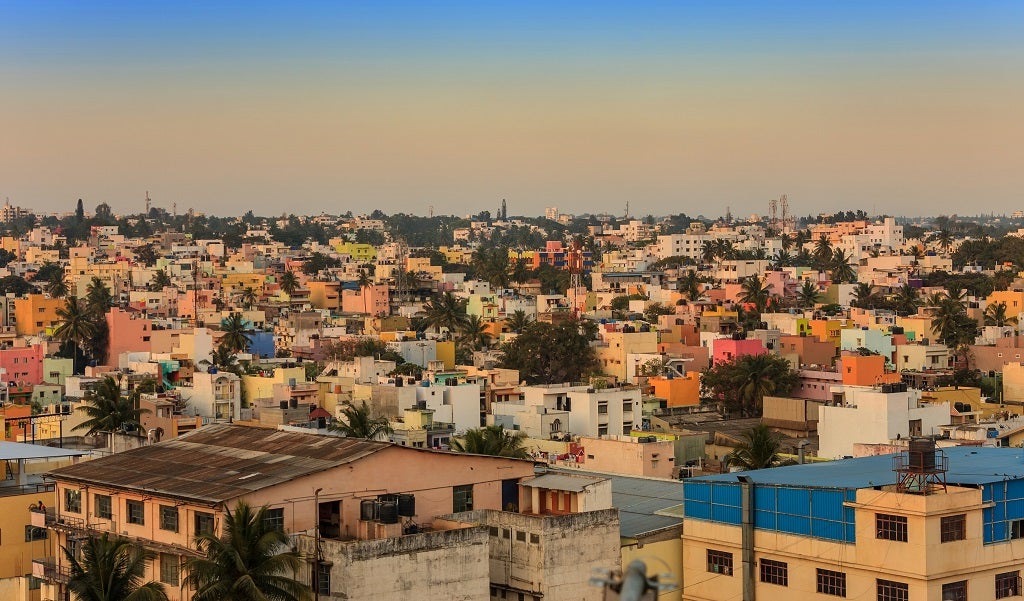Moving to Bangalore
Bangalore
-
Affordability 5 out of 5
-
Safety 4 out of 5
-
Healthcare 3 out of 5
-
Traffic Flow 1 out of 5
-
Property affordability 3 out of 5
-
Climate 5 out of 5
-
Environment quality 3 out of 5
Over the last decade Bangalore has seen an average annual GDP growth rate of around 10%, its population, at over 8 million, has doubled since 1985 and is projected to reach 9.5 million by 2025. If you’re looking to move to city spearheading the economic surge of India then Bangalore is an obvious choice.
Known as the Silicon Valley of India due to the large number of IT firms that are headquartered or have regional headquarters in the city (for example HP, Oracle, Yahoo!, LinkedIn and homegrown companies Infosys and Wipro), Bangalore is also a hub of aerospace, defence, biotech and telecommunications.
This scientific and technical ascendancy has not occurred by accident. The Indian government invested heavily in the infrastructure of many large cities post-independence in order to gain competitive advantage, building on the few beneficial legacies of British colonial rule – namely excellent educational facilities like Bangalore University and the Indian Institute of Science.
But Bangalore isn’t all about business. Moving there will introduce you to a vibrant cultural life which centres around the many festivals and holidays that the city celebrates; which includes a homegrown film industry; which makes eating out at the city’s many and diverse restaurants as as a key social activity; and which has put Bangalore 3rd among the world’s top 10 cities to visit according to the Lonely Planet.

Moving to Bangalore from the UK
Bangalore’s rapidly growing economy has attracted white collar immigrants from all over the world, with the UK among the most popular sources for professionals and skilled workers.
Moving from the UK to Bangalore is popular among young, single IT professionals looking to bolster their CVs overseas and open themselves up to the sights, sounds and experiences of the Indian subcontinent. It’s also a popular move among young families who want to offer their children a culturally enriched upbringing and a higher standard of living than they could find at home.
As such – and due to the colonial history – Bangalore has large British expat and Anglo-Indian populations. English is in widespread use, especially in the IT and business parks but also in restaurants, shops and government offices.
Property prices in Bangalore are rising even faster than the GDP: 2012 saw an 18% rise in average real estate prices, from Rs. 35,446 (£418) to Rs.41,839 (£494) per square metre.
Though Bangalore is by no means a vast metropolis – the metropolitan area is smaller than London – the public transport and roads leave a lot to be desired. Choosing where to live is therefore a decision that should take your daily commute into consideration.
Select the size of your move to get free quotes
Comparing Bangalore vs. London
Bangalore experiences wet and dry seasons with monsoon weather occurring between May and October. The hottest temperatures are in April and May when average highs are in the mid-thirties. The record low temperature in Bangalore, taken in December and January are just above 10 °C.
The cost of living in Bangalore, as you’d expect, is much, much lower than in the UK. As well as property prices and rents which amount to a small fraction of those you’d find in London, the groceries, utilities, public transport, entertainment and restaurants are all cheaper.
While Bangaloreans put up with more pollution and higher crime rates than Londoners they also, on average, report better health care and lower commute times.
Bangalore celebrates Karaga Shaktyotsava, or Bangalore Karaga, the city’s oldest festival, for eleven days each spring during which there are rituals, processions, martial arts displays and constant noise. Along with the Karaga, the five day Deepavali and the nine nights of Navratri are other important festivals.







